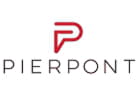
Matthew D. Kohel
Intellectual property (IP) is among a company's most important assets. It defines a company's brand and gives it a competitive advantage in the marketplace. Whatever goods or services your company may offer, protecting your intellectual property portfolio should be an important business goal. However, a company cannot adequately protect and manage its IP unless it knows what it owns and understands its value to the business. An intellectual property audit allows a company to do just that.
An IP audit is a systematic review of a company's IP assets and an analysis of their strengths and weaknesses. The overarching goals of an IP audit are to determine what IP a company owns and to develop a strategy as to how it can be effectively used and managed. On a more particular level, examples of the value provided by an IP audit include identifying underused processes and how they can contribute more to a company's bottom line, reviewing and updating standard operating procedures, compliance training for policies concerning the protection of intellectual property, reviewing licenses and contracts with third parties, or assessing the risk that you may be infringing another company's intellectual property rights. The implementation of better intel-lectual property controls is likely to affect other aspects of your business positively, such as by securing critical data and streamlining internal patent application processes.
A thorough and effective IP audit should align a company's IP portfolio with its business. Irrespective of a company's specific objectives, regular IP audits are useful because they help to create a corporate culture that values the protection of an important business asset.
When Are IP Audits Conducted?
Although there are many good reasons to conduct an IP audit, they can be placed in two general categories: the general management of IP and event-driven audits.
The General Management of Intellectual Property
An IP audit undertaken as a general management activity should be conducted no less than once a year. When it is part of a regular business practice, an IP audit provides information, not only about the value of an important asset, but about the processes by which a company manages that asset. Specifically, comprehensive IP audits identify gaps and deficiencies that might detrimentally affect a company's IP rights. Like other property rights, intellectual property rights are a creation of law and the failure to use or protect them properly means that you could lose them.
For example, for information to qualify as a trade secret under the Uniform Trade Secrets Act and the Defend Trade Secrets Act of 2016 it must, among other things, be the subject of efforts that are reasonable under the circumstances to maintain its secrecy. Uniform Trade Secrets Act, §.1.(4) (1985); 18 U.S.C. 41839(3). Because these statutes employ a reasonableness standard — as opposed to one of absolute secrecy — there is no bright line test of what is reasonable.
Courts have found that contractual protections (e.g., non-disclosure agreements) are a basic and reasonable step that companies should use, in combination with other measures, for their confidential information to qualify as a trade secret. See, e.g., Opus Fund Servs. (USA) LLC v. Theorem Fund Servs. LLC, No. 17-cv-923, 2018 WL 1156246, at *5 (N.D. Ill. March 5, 2018) ("While 'an agreement restricting the use of information may be considered a reasonable step to maintain secrecy of a trade secret,' such an agreement, without more, is not enough.") (quoting Fire 'Em Up, Inc. v. Technocarb Equip. (2004) Ltd., 799 F. Supp. 2d 846, 851 (N.D. Ill. 2011)).
Questions that can be answered through an IP audit are whether the appropriate agreements are in place, and, based on the nature of a company's business activities, who should be subject to a non-disclosure agreement. Stated differently, is it enough for a company to require its employees and its direct contractors to sign a nondisclosure agreement? Likely not, if a company conducts research and development activities involving subcontractors and consultants with whom it does not directly have agreements. Thus, contract review can be an important part of an IP audit by allowing a company to determine not only whether and which individuals may have had access to its sensitive commercial information without any contractual obligation to refrain from disclosing or using it, but how its contracts should be updated and improved to protect its intellectual property going forward.
Event-Driven Audits
The second category is event-driven IP audits, where due diligence is a critical aspect of the transaction. Common examples are a merger, an asset sale, or a corporate restructuring. Also, a company should consider performing an IP audit when there is a significant transfer of intellec-tual property, such as an assignment or the entry into a licensing agreement. An IP audit is a necessary tool for the acquirer to ensure that it is obtaining the intellectual property free of any encumbrances. In particular, the audit may identify potential defects in the chain of title or claims on intellectual property by an alleged lien-holder or co-inventor. An audit performed with regard to the renewal of a license agreement may identify terms that were being ignored by the licensee that could significantly affect the licensor's business. Specifically, an audit may reveal that the licensee was not making the required royalty payments or misusing your company's software, logo, or derivative works. This is important information that affects a company's brand and bottom line.
An Overview of the Process
Proper planning is important before the substantive work of an audit begins. As part of the planning phase, a company should determine the purpose, scope, and budget for the audit. Defining the goals of the audit and the financial resources available to achieve them creates focus and a roadmap for success. After the planning is finished, the information gathering begins.
IP audits are conducted by a team consisting of company management, business people, and attorneys, both in-house and outside counsel. It is often the case that the team is cross-functional and includes personnel from R&D, sales and marketing, and potentially other disciplines, such as operations, if for example, they can provide insight into the competitive landscape or potential infringements of another's intellectual property rights.
The audit is typically directed by outside counsel, working closely with in-house attorneys and management to make sure that the audit reflects the stated goals and the company's business strategy. The first step is the identification of the company's intellectual property — its patents and pending patent applications, trademarks, copyrights, and trade secrets. An IP audit also may include the identification of rights that a company licenses to and from third parties. Information should be obtained directly from company personnel through in-person interviews and questionnaires, as well as from reviewing documents, such as relevant contracts, patent and trademark filings, and laboratory notebooks.
Reviewing patent and trademark files, both for the United States and internationally, is a critical step in the IP audit. If mandatory filings have not been made or are deficient, or if a company has failed to pay the requisite maintenance fees, a company may inadvertently abandon important intellectual property rights.
Moreover, interviewing employees can reveal potential defects in intellectual property rights. For instance, the patent laws require that a patent name the correct inventor. See 35 U.S.C. §115(a) ("An application for patent that is filed under section 111(a) or commences the national stage under section 371 shall include, or be amended to include, the name of the inventor for any invention daimed in the application."). It is not uncommon for companies to retain independent contractors who have a particular expertise to work on a research and development project. If the work on that project leads to patentable inventions, the company (to which the patent has been assigned) should confer with its employees to identify whether the contractors conceived of any patentable inventions as part of its work on the project.
After the intellectual property is identified and relevant information is collected, a report is generated that sets out the following basic information:
- the owner of each item of intellectual property;
- the remaining life of each item of intellectual property;
- a description of whether and how the intellectual property is being used, including any potential infringements and misuses by the company and third parties; and
- the evaluation of any defects and recommended remedial action.
The report may include other information, depending on the reason for the audit. For instance, if the audit was conducted as due diligence for a merger or acquisition, the report may provide information about a product or process that your company may be acquiring that is not subject to a patent. Ascertaining such information gives the acquiring company an opportunity to negotiate for the seller to make the necessary filings to perfect its anticipated IP rights as a condition of the deal.
IP Audits: What Do You Want to Accomplish?
Establishing clear objectives for the IP audit will help to keep the process on track. Clarifying, for example, whether the purpose is to reduce the risk of the company being sued for infringement or improving a business's value will ensure that the resources spent on the audit are used to generate the greatest benefit.
Reduce the Risk of Being Sued for Infringement
Intellectual property litigation is expensive, and while it may not be entirely avoidable, an IP audit is an effective litigation avoidance tool and can reduce the risk that your business will be sued for infringement. An IP audit does this by assessing the potential that a company's product infringes another's patents or trademark or misappropriates a third party's trade secrets. Evaluating the risk of infringement is especially important for small companies that may not be able to afford a drawn-out and costly lawsuit.
To evaluate the likelihood of infringement, a company will analyze the technical and design features of its current or planned products and do the same of competitive products in the marketplace. In addition, a prior art search should be run by patent counsel or a prior art search company to get current information about patents and the risk they pose, especially to new products that a company plans to bring to market. A prior art search conducted for this reason is commonly known as a freedom to operate (FTO) analysis. FTO analyses provide vital information to a company about the risk of making or selling a new product. To be most cost-ef-fective, an FTO analysis should be done early in the product development process, so that a company may make any necessary modifications to a product's anticipated features to minimize the possibility of a lawsuit.
Another benefit of an IP audit, and an FTO analysis in particular, is identifying space within the relevant field that has not been patented, and thus, opportunities for further research and development and intellectual property protection. Because an FTO analysis can be expensive, they may be more appropriate in conjunction with the beginning of a new R&D project as opposed to part of a regular IP audit.
Using an IP Audit to Improve the Value of Your Business
By obtaining a deeper understanding of its intellectual property, a company is better suited to protect and exploit its value. For example, a company may use of the results of the audit to analyze whether its trade secrets are embodied in its core products, the exclusivity that remains in those offerings by knowing the life of its patents, or how its trademarks are related to its brand and goodwill with customers.
Also, an IP audit can unlock hidden value through the identification of new business opportunities and product line extensions. By assessing the relationship between its intellectual property and its patents, a company may decide to strengthen its market position by filing continuation patent applications. Similarly, if a company assesses another company's intellectual property or products as part of the audit, it may choose to seek patent protection on its previously undisclosed methods and systems to maintain its standing in the marketplace and limit the market share of its competitors. Additionally, an IP audit may lead a company to try to obtain, through a sale or a license, the rights to a third party's intellectual property to address a gap or to increase the robustness of its intellectual property portfolio. Thus, an IP audit can be an effective tool to create new revenue streams.
Intellectual Property Valuation
Generally, the value of intellectual property is determined through accounting methods. Three of the most common valuation methodologies are the income approach, the cost approach, and the market approach. However, there is no "one-size-fits-all" way of valuing intellectual property and, depending on a company's business model and the information it learned from an IP audit, a company may employ alternative valuation strategies.
As noted above, contract and license review are important aspects of an IP audit, and they can provide nuanced information about the value of a company's intellectual property rights. Consider a scenario where Company A owns three patents — patents 1, 2, and 3 — each of which claim different methods of sensing a leak in a roof. Company A exploits patent 1 by making and selling products covered by that patent, but it has entered into a license giving third-parties the rights to do so under patents 2 and 3. Further, the license for patent 2 is a non-ex-clusive license, while Company A has exclusively licensed patent 3 to another company.
Company A's rights with respect to these three patents should be assessed as part of an IP audit, and the legal consequences of the licenses on Company A's rights goes into valuing its patent portfolio. Because Company A has given another company an exclusive license to patent 3, Company A cannot make or sell products that use that invention. By contrast, Company A is still permitted to sell goods that use the inventions claimed in patent 2, because it has only granted a non-exclusive license; and Company A can do what it wishes with the patent 1 inventions because it owns the patent free and clear of any license arrangement.
Company A's ability to exploit each of the three patents will affect their value to the company's business, and even though it can still sell goods that use patent 2's inventions, Company A may have given the right to a competitor do so, as well. Considerations arising out of an IP audit are likely to include whether to renew the non-exclusive license for patent 2, or whether Company A should continue licensing the patents as opposed simply to owning them or selling them to the licensees if the leak detection is not a core part of its business. This hypothetical situation shows how an IP audit reveals useful information about a company's intellectual property rights, but also how those rights can be aligned with current and future business strategies to maximize their value.
An IP audit should be part of a company's plan to manage its intellectual property. It's important to know which assets you own, how you use them, and the associated risks. Through an IP audit, a company can identify and fix problems and develop strategies to protect and optimize the return on a valuable asset. In short, an IP audit will contribute to the success of your business.
Matthew D. Kohel is a partner at Goodell Devries Leech & Dann LLP in Baltimore. His practice is concentrated in the areas of commercial, intellectual property, and product liability litigation. He represents clients in a variety of matters, including breach of contract, trademark infringement, the sale of counterfeit goods, and misappropriation of trade secrets. Also, Mr. Kohel advises clients with contract preparation and negotiation, particularly on the development and protection of technologies and intellectual property. He can be reached at mkohel@gdldlaw.com.
This article originally appeared in the Fall 2020 issue of DRI's In-House Defense Quarterly.
About Goodell DeVries
Goodell DeVries is a regional law firm with a national presence. From product liability and mass torts to medical malpractice law, complex commercial litigation, insurance, toxic torts, and more, Goodell DeVries’s team of 50 attorneys handles the most complex legal challenges for clients across the country. Our lawyers are ranked among the best in the nation by leading directories, including Chambers, Best Lawyers and Super Lawyers. To learn more, visit www.gdldlaw.com.






